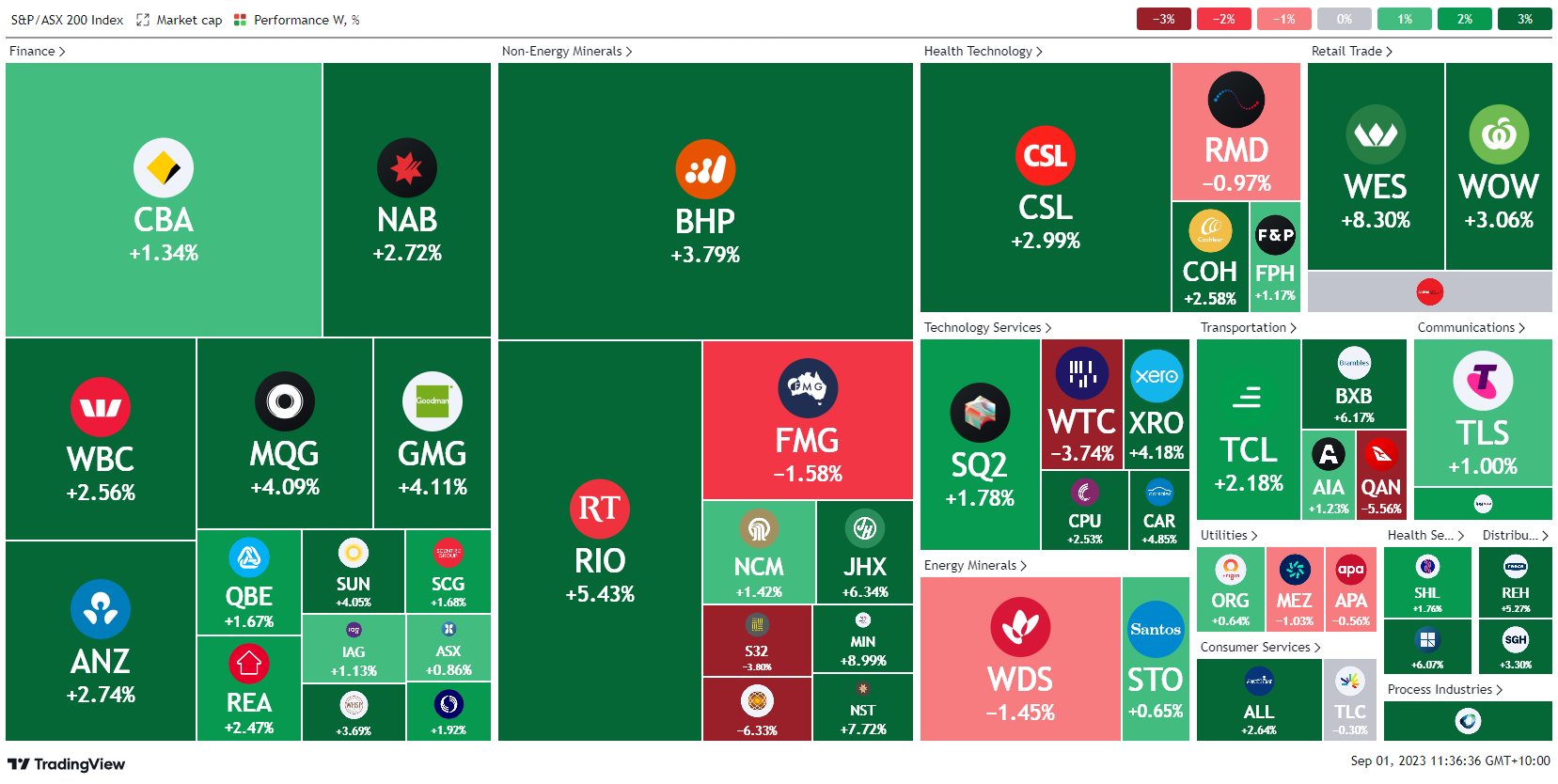US JOLTS declined sharply to 8.83m, Australian CPI y/y fell 4.9%
Let’s hop straight into five of the biggest developments this week.
If you’d prefer to watch this update, rather than read it, please click below.
US JOLTS declined sharply to 8.83m
Weakness in the US labour market triggered alarm bells and fresh scrutiny into the health of the US economy. The labour market has been the strongest part of the US economy; however, July’s jobs decline marked the sixth slump in seven successive months. A slowing labour market aligns with a wait and see approach for further interest rate increases.
2. US CB consumer confidence slumped in August to 106.1
Uncertainty is creeping into the US economy with Americans losing confidence in their perception of the trajectory of the economy. Results from surveyed households showed a fall in consumer confidence in August to 106.1 from the 114.0 in the previous month. This was a shock to markets that had anticipated a rise in confidence to 116.0. This data point again supports the view that inflation is starting to be felt by consumers.
3. Australian CPI y/y fell 4.9%
Inflation in Australia is thawing at a far much faster rate than expected. Inflation fell to 4.9% in the twelve months leading to July from the 5.4% reported a year ago. The inference is that the prevailing historically high interest rates are taking a major effect on inflation dynamics. The annual reduction left markets certain that the RBA will continue with their wait and see approach.
4. US GDP q/q growth fell to 2.1%
US GDP grew at a slower rate than expected in the second quarter of 2023. The 2.4% growth in the first quarter was cut to 2.1% against market expectations of 2.4%. A shortfall in private inventory investment underlay the comparative underperformance after high interest rates stifled borrowing in the second quarter.
5. China’s manufacturing PMI marginally rose to 49.7
While Chinese manufacturing is still in contraction, the rate of contraction was at a slightly better rate than what was seen in July. The figure of 49.7 beat market expectations of 49.1. The Chinese economy has been contracting as of late, which has compelled the PBOC to cut borrowing rates, however the effect of these will only be felt next quarter.
Below shows the performance of a range of futures markets we track. Some of these are included within the universe of our multi-strategy hedge fund.
The cold winter is setting in with spiked demand for cocoa and natural gas, leading to rising prices as a result. The wet conditions in the East Coast of the US also persisted as Hurricane Idalia continues to wreak havoc on orange farmlands. Petroleum products have rebounded significantly this week after a sharp correction last week on relentless supply cuts from producers and revived demand from China.
The VIX fell sharply to signal a risk on scenario with markets upbeat that weak data from the US. This weak data supports the view that rates will be held at current levels for the foreseeable future. Fixed income markets continue to be choppy and lack direction.
Here is the week's heatmap for the largest companies in the ASX.

An aggressive week of buying for the ASX 200, as all major constituents, ex-energy rebounded. The inflation figure on Tuesday provided a catalyst for market participants to get invested into large cap businesses post a raft of company reports. Brambles produced a solid report which drove it higher by around 7% on the day. WES also experienced good performance over the week after their report last Friday. FMG had a mediocre week after their FY report on Monday. Fortunately, a rebound in iron ore assisted our iron ore names.
Below shows our proprietary trend following barometer which captures the number of futures contracts within our universe hitting new short and long-term trends.
Please reach out if you’d like to find out more about how our quantitative approach captures the price action covered above, or if you would like to receive these updates directly to your inbox, please email admin@framefunds.com.au.
5 topics

